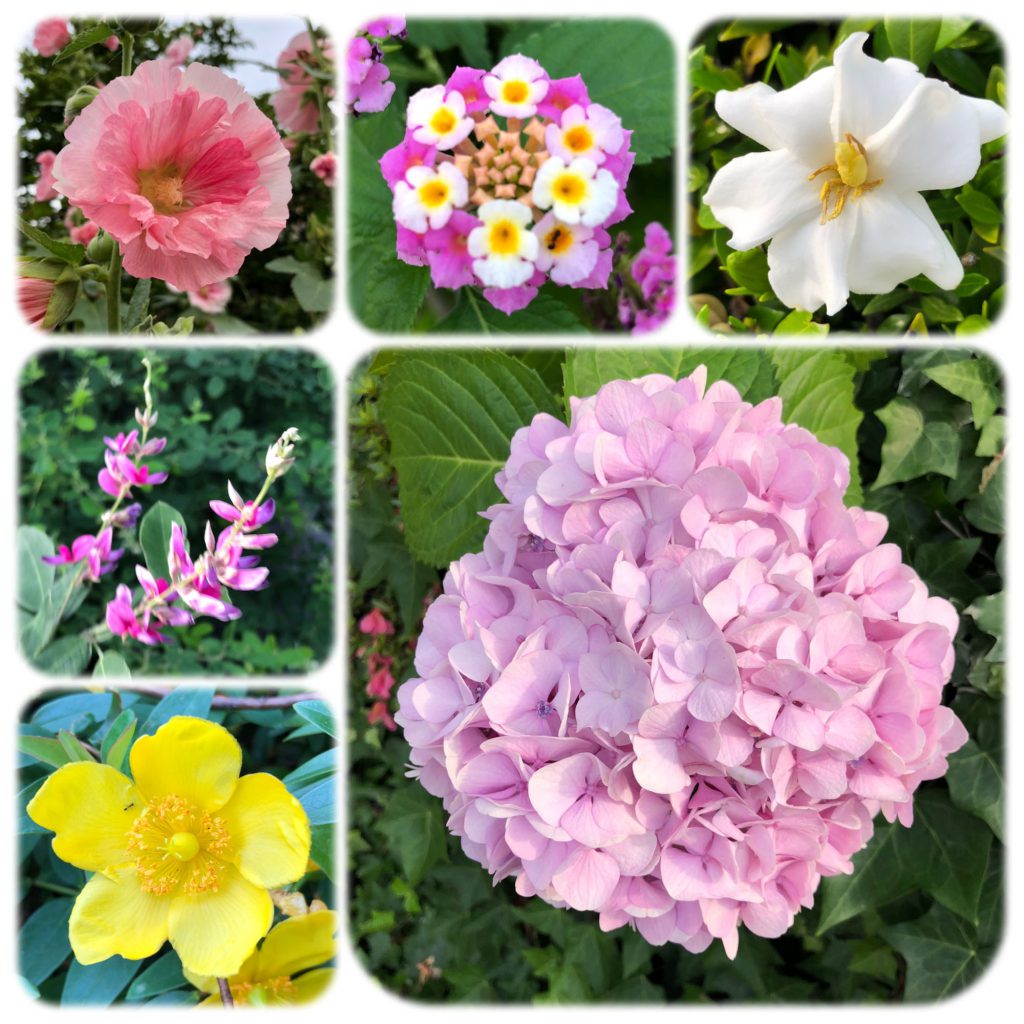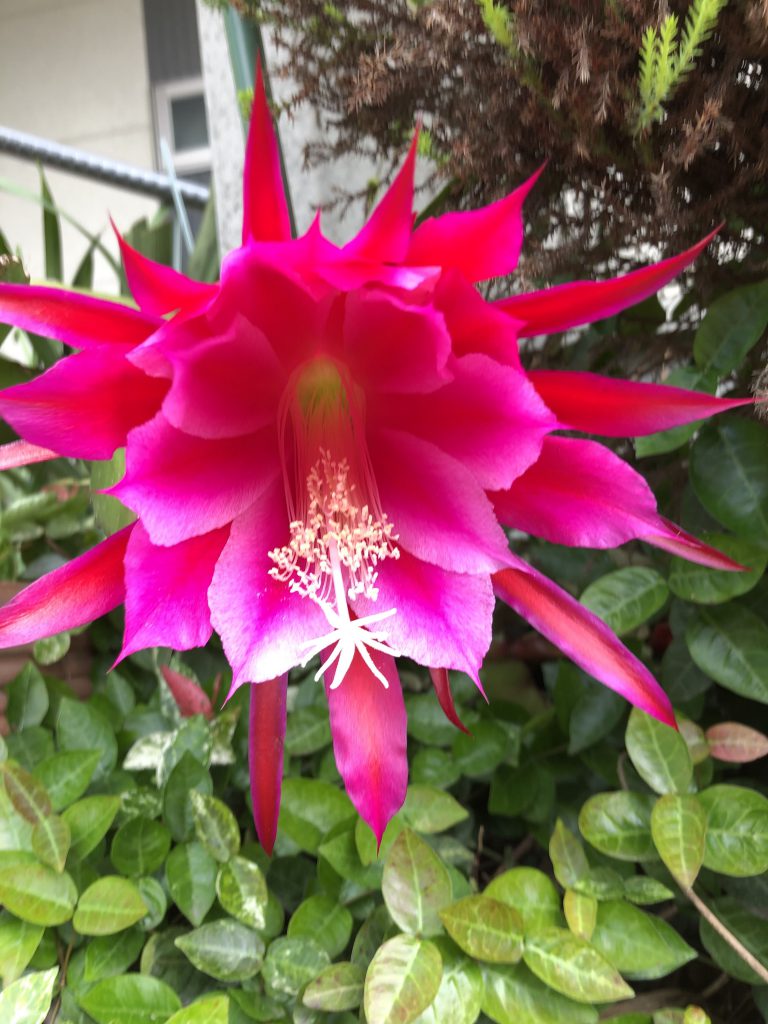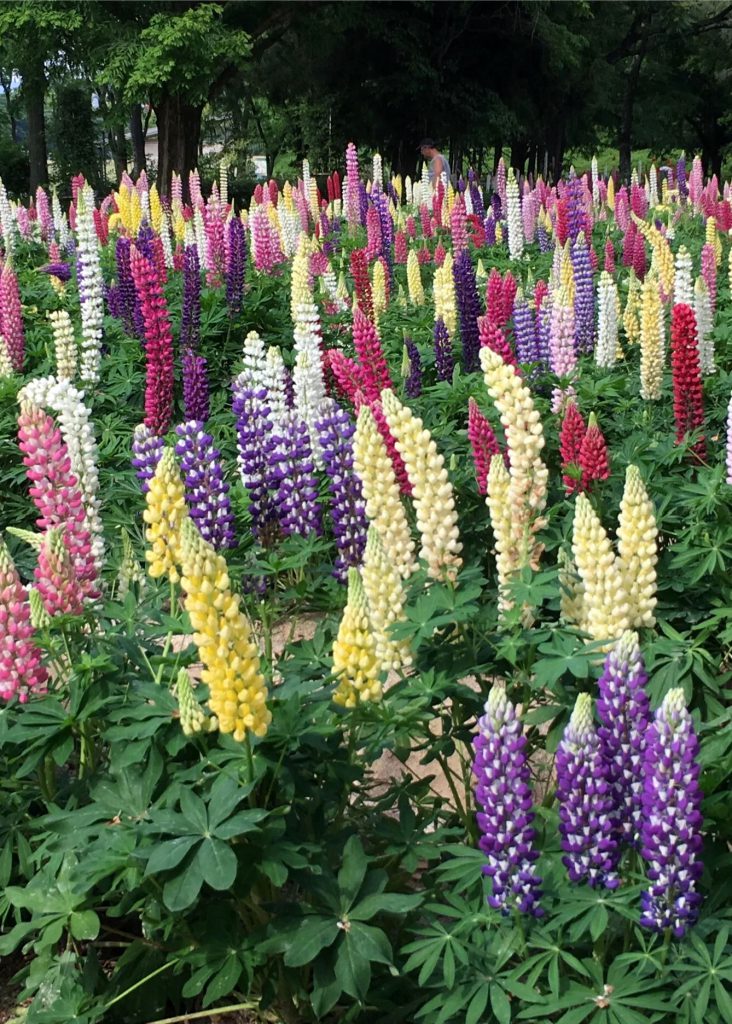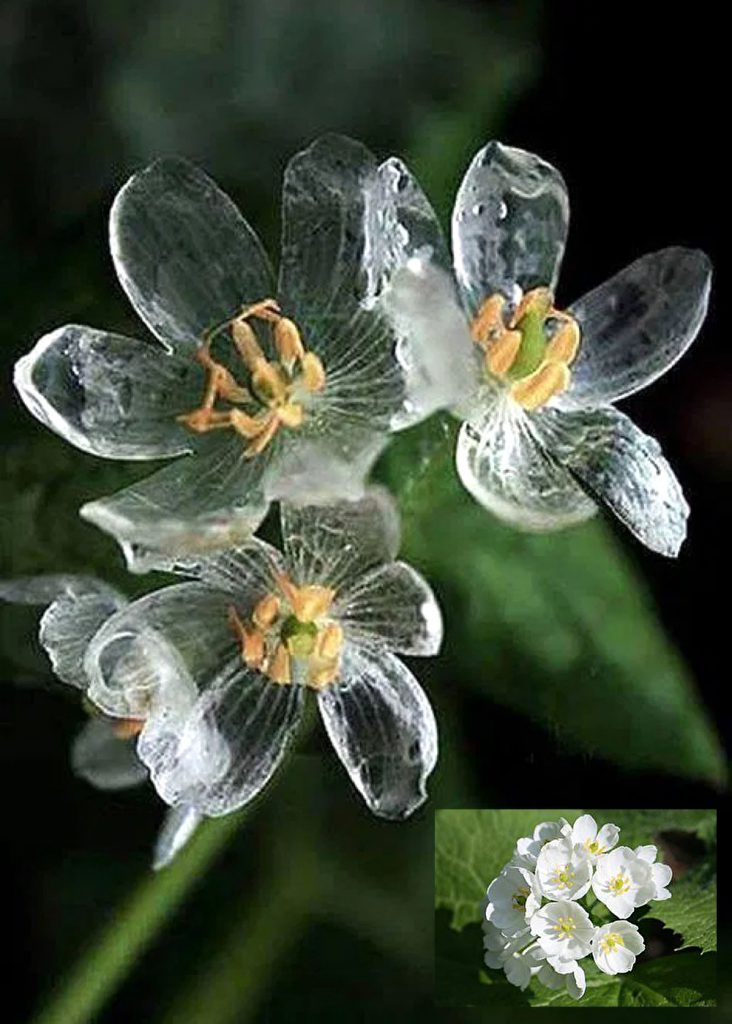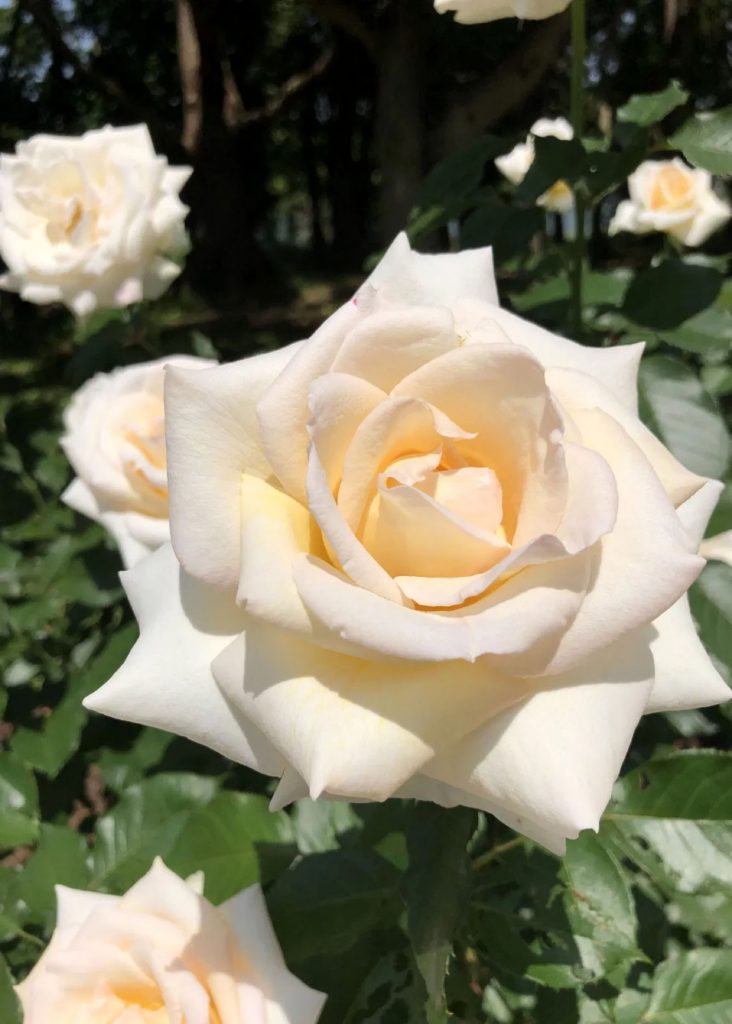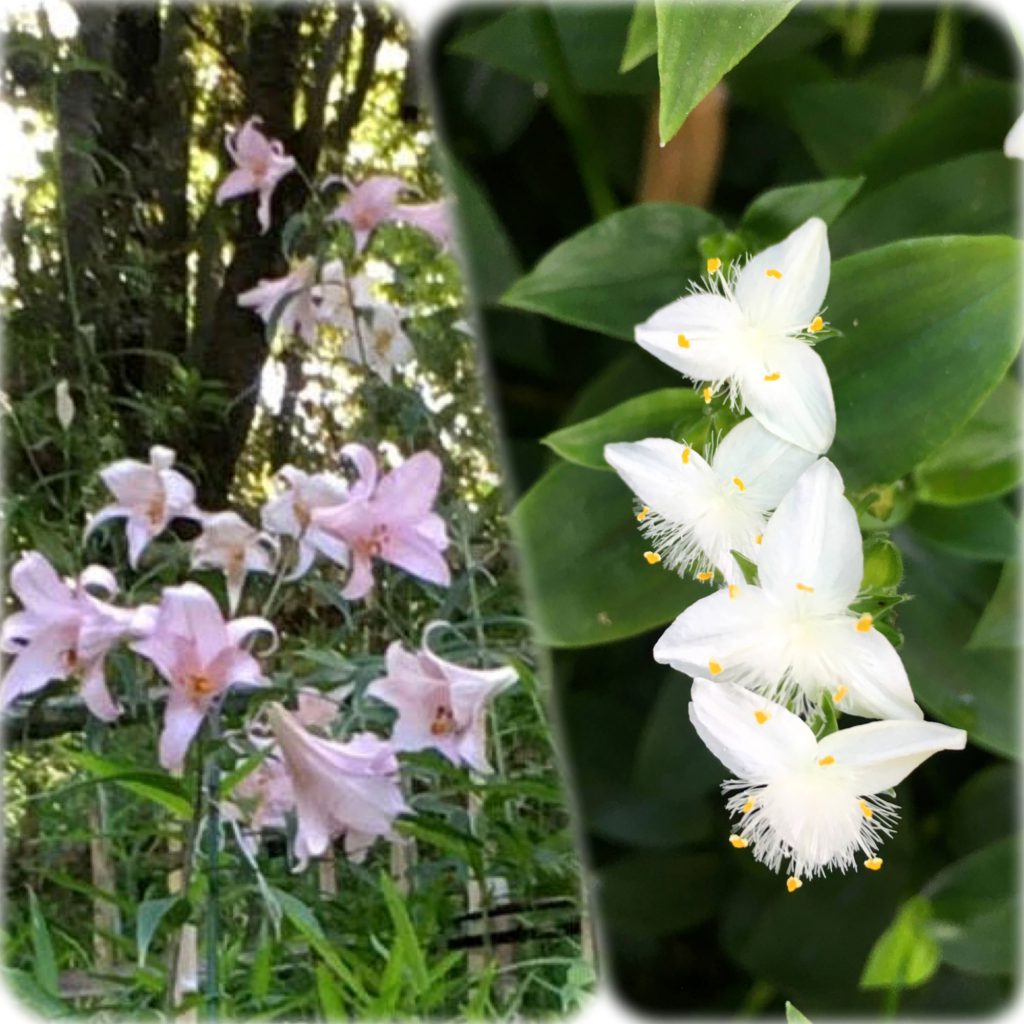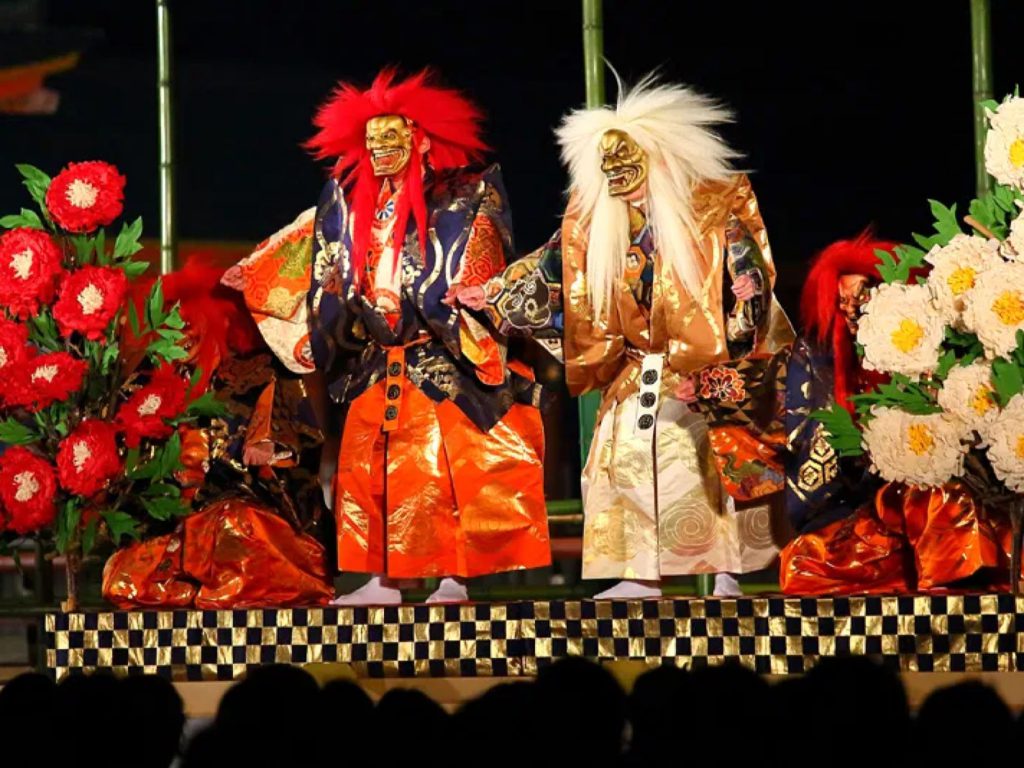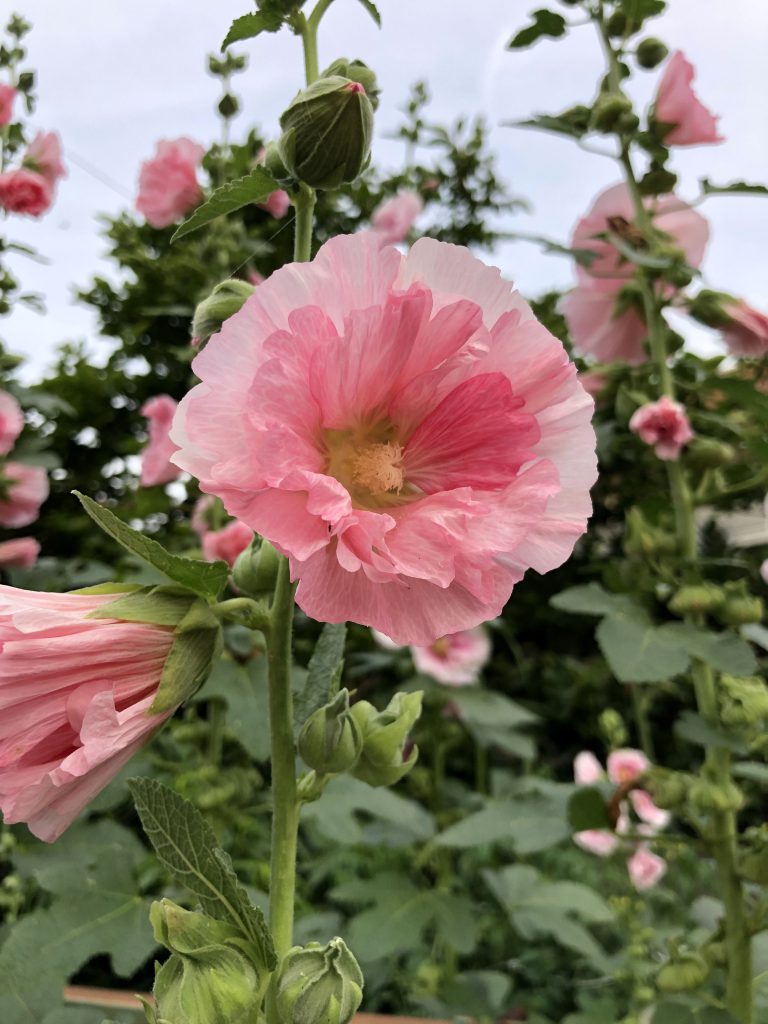
When Tachiaoi(the hollyhocks) blooms , I feel the arrival of summer. Tachiaoi blooms in order from the buds at the bottom of the stem. It is said that the rainy season begins when it begins to bloom, and when the top flowers bloom, the rainy season ends. This year’s rainy season is a record-breaking speed, and it’s been three weeks since then, but it hasn’t rained like the rainy season, and “summer day” and “midsummer day” continue every day. Tachiaoi is already flowering to the top. Speaking of Aoi, it refers to this Tachiaoi, but Fuyuaoi is also a member of Aoi. Aoi is tough and its medicinal properties have been known for a long time regardless of east or west, and the English name Holioc also means that. One of the three major festivals in Kyoto, “Aoi Matsuri,” will be held on May 15th. They will put up a God Print on the Dashi (a kind of float with a variety of colorful decorations in festival parades) and decorate the Kikkei which twines Aoi and Katsura. Aoi symbolizes a woman and Katsura symbolizes a man. It is the oldest festival in Japan that has been passed down for 1,500 years. This may have been born from the desire to appreciate the strength and medicinal properties of Aoi. Aoi Matsuri also appears in the story of The Tale of Genji, and there are also scenes where “Aoi no Ue” princess sees it. The family crest of the Tokugawa family, Mitsuba Aoi, is also famous.
タチアオイが咲くと夏到来を感じます。タチアオイは、茎の下の方の蕾から順番に咲いていきます。咲き始めは梅雨のはじまり頃で、てっぺんの花が咲くと梅雨が明けると言われています。今年の梅雨入りは記録破りの早さで、それからもう3週間になりますが、梅雨らしい雨も降らず、連日、夏日、真夏日が続いています。タチアオイはもうてっぺんまで花を付けています。アオイといえばこのタチアオイを指しますが、フユアオイもアオイの仲間です。アオイは強靭で薬効の有用性は古くから東西を問わず知られ、英名のホリオックもその意味を表します。5月15日に開催される京都三大祭りのひとつ「葵祭」は双葉葵の神紋を掲げ、葵と桂の葉をからませて作った葵桂(きっけい)と葵の花で山車を飾ります。葵は女性、桂は男性を象徴しています。1,500年前から引き継がれている日本最古の祭りです。これも葵の逞しさと薬効にあやかりたいと言うところから生まれたのでしょう。葵祭は源氏物語にも登場しますし、「葵の上」がそれを見物する場面もあります。徳川家の家紋、三ツ葉葵も有名です。


